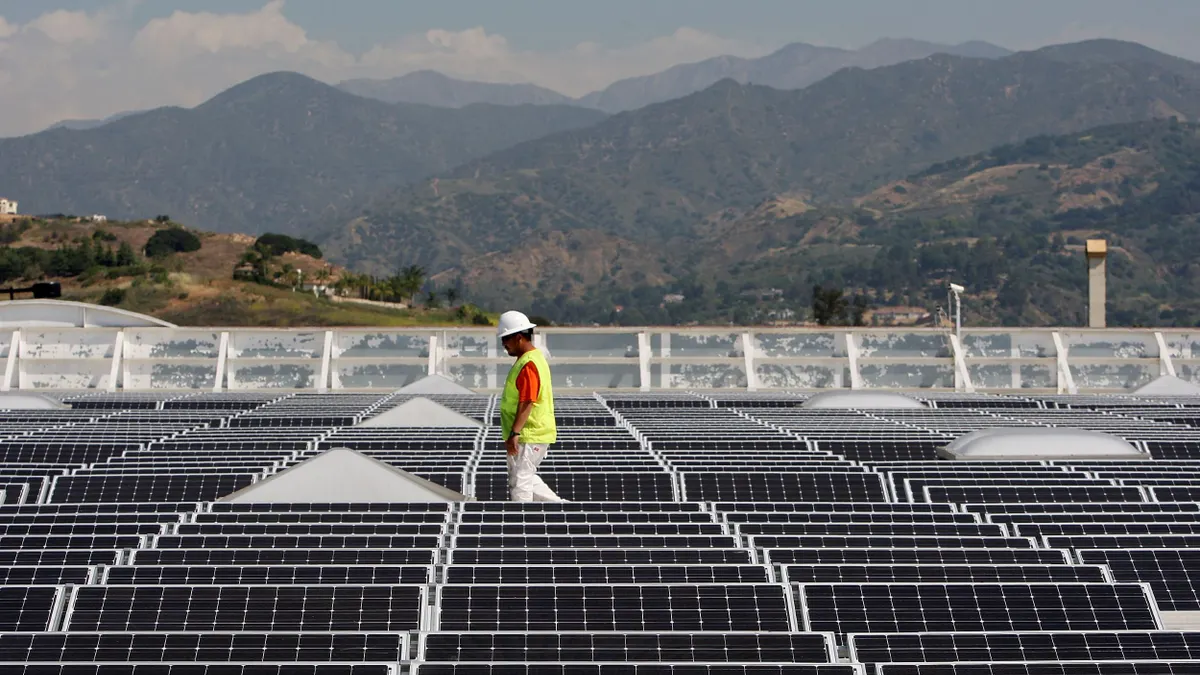The following is a viewpoint from Brien J. Sheahan, chairman and CEO of the Illinois Commerce Commission.
Two years ago, Illinois lawmakers faced a stark choice. Act to preserve and expand the state's supply of zero-carbon power, or do nothing and watch some of those resources shut down as a flawed energy market steered investment to more expensive and polluting sources of electricity.
Backed by a broad coalition of environmentalists, labor and business leaders, state lawmakers chose to act by passing landmark legislation that saved two of Illinois' carbon emissions-free nuclear power plants, greatly expanded renewable energy resources, dramatically increased energy efficiency programming and enacted other reforms aimed at making Illinois a leader in clean energy. The new law has been described as the most significant energy policy in a generation.
By any reasonable measure, the Future Energy Jobs Act (FEJA) is doing exactly what it was designed to do, and is expected to return more benefits to consumers and the economy than it will cost over the life of the program. As a result, the solar industry is in the midst of unprecedented expansion in Illinois with development of 3,000 MW in the coming years, 1,400 MW of new wind energy is on the way and hundreds of millions of dollars of investment in energy efficiency is in the works.
Christie Hicks, manager of clean energy regulatory implementation at the Environmental Defense Fund, has said that "Illinois is solidifying its place at the forefront of America's clean energy economy, showing other states how to provide equitable access to renewables." And Brad Klein, a senior attorney at the Environmental Law & Policy Center has said "this plan and Illinois' modernized renewable energy policy put our state on the map as one of the nation's solar leaders."
The new law, and its implementation by the Illinois Commerce Commission (ICC), puts the state firmly on-track to meet its goal of 25% renewable energy by 2025.
If the story ended there, it would stand as a great example of rare bipartisan cooperation and a victory for consumers and the environment. But today FEJA is under assault by PJM Interconnection, the regional grid operator (RTO) that 13 states and the District of Columbia have entrusted with operating the wholesale electric market, including in northern Illinois.
Among PJM's primary responsibilities is operating the market for securing power generation capacity, which ensures that the PJM region has enough electricity generation capacity and other resources available to meet electricity demand on even the hottest days of the year.
PJM's recently proposed changes to the capacity market structure are designed to undermine and diminish, rather than accommodate, key provisions of FEJA based on the RTO's unproven concerns regarding the impact of FEJA and other similar state programs on PJM capacity market price formation. Proposals to address those unproven concerns could fundamentally disrupt the market and threaten the longstanding division of authority between state and federal regulators.
PJM's reasoning ignores the fact that FEJA employs the same policy mechanisms that dozens of states — including many in PJM — have successfully used for decades to promote the growth of renewables, such as wind and solar, all without PJM raising an eyebrow. More important, PJM's proposal undermines the state's fundamental responsibility to act in the best interest of its citizens.
This problem has been years in the making. In fact, among the primary reasons Illinois passed FEJA was because current PJM market rules do not value what our citizens and lawmakers overwhelmingly say they want — an energy supply that is cleaner, affordable and resilient.
The Federal Energy Regulatory Commission (FERC), which has oversight of the PJM market, recently rejected new rules proposed by PJM and ordered it to come up with a different approach — one that includes an expansive minimum offer price rule ("MOPR") but also accommodates states' rights and environmental choices.
FERC suggested that states should have the option, consistent with their climate policies, of taking specific electricity generation resources and corresponding load out of the PJM capacity market. Unfortunately, PJM's Orwellian notion of accommodation is more of the same. Rather than accommodating, a strong MOPR and two-stage pricing will mitigate the environmental policy decisions of elected officials and cost Illinois consumers more.
The ICC shares FERC's interest in promoting a competitive electricity market that properly respects state choices to promote carbon free, affordable and resilient energy sources, and provides states with the flexibility to design programs that address climate change — a right recently upheld by both the Seventh Circuit Court of Appeals in Chicago and the Second Circuit Court of Appeals in New York. In upholding the law, the courts determined that state support for the environmental attributes of zero carbon emitting resources did not improperly interfere with wholesale markets.
While stakeholders need to find a solution that protects the competitive market and accommodates legitimate environmental policy, PJM needs to understand that states with renewable portfolio standards, zero emissions standards and other zero carbon standards will most certainly be unwilling to allow them to be diminished. The state legislative proposals that will inevitably result will likely address whether it is possible to continue supporting zero emission and renewable generation resources while participating in managed wholesale capacity markets. As it becomes clear that administrative markets like PJM's discriminate against, or mitigate the effects of, zero carbon and renewable resources, states with renewable or zero-carbon portfolio standards will have to reevaluate their participation.
An unconventional, but potentially viable solution is for transmission owners currently in the PJM footprint to consider joining a neighboring RTO, such as the Midcontinent Independent System Operator (MISO), or for the state to take on the management of market functions like New York and California.
Unlike PJM, MISO's rules not only acknowledge and accommodate state policy preferences, they require MISO to integrate state-sponsored policies into its wholesale markets. Companies are free to leave one RTO and join another, though the existing tariffs for each RTO will govern in determining the cost consequences of that decision. While switching from one RTO to another is uncommon, given the associated monetary costs, this could be a viable option over the long-run in many states given the growing emphasis on environmental and climate policy initiatives.
Illinois and other states have benefited from restructured markets over the past two decades. However, as the cost of reserves creep higher and higher, and the markets themselves fail to value the environmental attributes that people want and that the courts have said are lawful exercises of state authority, states will justifiably seek alternatives.





















